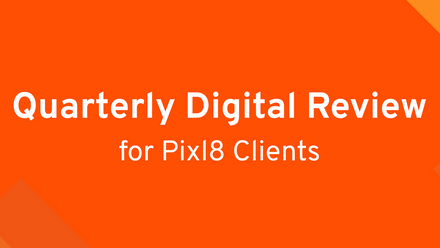5 top tips to transform digitally
Alex Skinner, Chief Executive Officer, Pixl8 Group
Digital transformation – it’s the buzzphrase of the moment. But when you look closer, it’s clear that in the membership and associations sector the potential to align digital to your organisation’s ambitions is powerful. There are some key reasons for this and they’re common to organisations across the sector.
So what does a successful digital transformation look like? We have seen it happen over the years and would like you to consider what the ingredients for success are.
1. Pinpoint where you are on your digital journey
Making an honest and realistic assessment of the degree of digital transformation that your organisation requires to deliver on long-term business goals is critical. As is pinpointing the degree of buy-in you have for digital from senior leadership and the organisation more widely.
Ask yourself: ‘Why you are embarking on this project?’ Sometimes there is boardroom or internal pressure to deliver a digital project quickly. However, reactive projects are not necessarily a recipe for digital success. It can be tempting to have a slice of what your competitors are doing but commissioning digital simply to keep up with emerging trends is not always best use of precious budgets. Clear, concrete business goals must be your starting point – finding the best digital solution to deliver the change you require will come from there.
2. Securing buy-in is a must
Some of us like change more than others. This is also true for organisations, with some in a constant state of revolution and evolution, and others more anxious about making significant changes. This is one key area where a digital transformation agency can support you and illustrate how change can be managed and delivered. Bringing expertise and experience to the table from the outset can support a client to hone their strategic objectives – something which is key in order to get senior leadership onside in the boardroom.
An agency can support you with everything from modelling and demonstrating the projected ROI on investment in digital, to the cultural value that significant digital change can enable for your organisational structure or business model.
But it doesn’t stop in the boardroom. Sometimes more fundamental changes to team structures, collaboration and ways of working is required. Knowing where your strengths lie and seeking support to fill in the skills and knowledge gaps you identify is essential. Building a team that combines expertise from across departments to focus on the project and goals at hand can make a world of difference. Crucially, it ensures the longevity of commitment that is required to deliver deep digital transformation.
3. Plan for the future and set well-defined objectives
Digital ambitions can be realised when projects are specific, explicit and discussed and developed from the get-go. Any digital transformation project should begin with a discovery phase. So articulating clearly defined business objectives and target setting is the place to start.
Strategic aims that align with a way of monitoring outcomes regularly can give valuable insight along the way to provide confidence when things are going well and highlight areas that need improvement.
So for example, continued assessment, monitoring and evaluation across key content areas, audience behaviour and conversion, will enable you to measure the progress you’re making. There’s no getting away from the fact that change management will require a degree of adaptation across the solutions you implement and data is necessary to optimise, but understanding this at the outset is really important.
This should help prevent your organisation from getting stuck in adopting a feature-led approach – I really want X, without really asking why. I would say be more challenging with what you are asking for and ensure it really will deliver on your business goals.
4. Be realistic and agile with your approach to budgeting
In the membership or non-profit sectors, budgets can be tight, but it’s about being brave and having ambition. Often organisations can be responding to membership issues such as problems with renewals and updating their online accounts. It is really important that these issues are addressed, but we can be way more ambitious than just resolving transactional functionality.
So, at times ask yourself, is your ambition being limited by what is perceived as necessity? By just covering the basics, you may be de-risking a project but are you taking a hit on the experience you offer to your members? Don’t set objectives at a low level – aim high from the outset – as an agency, we love that!
5. Test, test and re-test
A percentage of your budget should go towards the unknowns – we need to hypothesise; we need to A/B test to push forward. Diverting budgets to delve deeper can really reap rewards in the long-run.
A testing culture gives you the confidence to know that what you are doing is meeting the needs of your membership. Ongoing testing sets you apart from the rest. At Pixl8, we love to optimise.
Digital transformation – let us show you how
I always recommend that our partners invest time heavily in the planning stage of a project. Digital transformation requires fundamental change in process, organisational culture, and workflow. Considering and planning for these five key issues before you kick-off your project, will help your organisation identify the degree of digital transformation that your organisation requires to deliver on your business goals and ambitions.
Over the years our clients have fed back to us that building a trusted digital partnership with their supplier has been key to the success of digital transformation. We know that finding the right agency partner to support you to deliver your project is critical.
If you’re looking for guidance on where to start, get in touch with us to arrange a chat – we’d love to hear from you.






